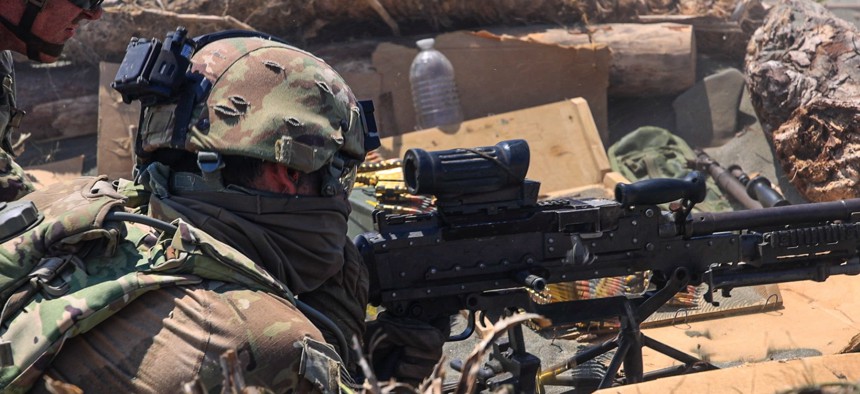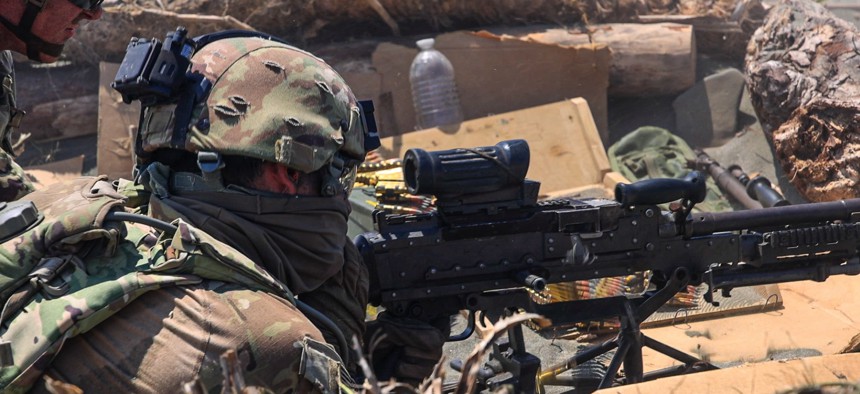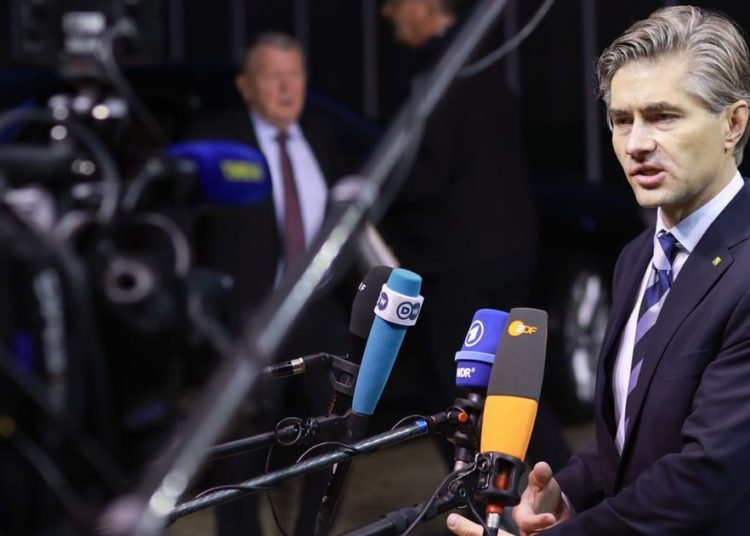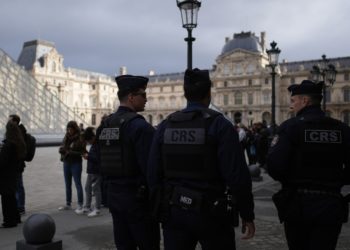
An Army brigade training in the Philippines has been able to 3D-print about 100 drones in the field, leaders told reporters Wednesday, in addition to sourcing and purifying their own water—all part of learning to better operate in the vast Indo-Pacific, where it’s not so easy to fly in supplies.
The Hawaii-based 2nd Mobile Brigade Combat Team, 25th Infantry Division, is one of the first Army units to join the Transformation-in-Contact initiative. Since March, the brigade has been in the Philippines, participating in Exercises Balikatan and Salaknib, as well as a Joint Pacific Multinational Training Center event.
“All of the first-person-view drones that we have built have been built with 3D-printing capability,” Maj. Gen. Marcus Evans, 25th ID’s commander, told reporters. “We started this initiative at the beginning of this year, and we deployed that capability…forward into the region. That has allowed us to print almost 100 drones.”
Their first model was made of three to five parts, said 2nd MBCT’s Command Sgt. Maj. Eric Guevara, but it wasn’t super-efficient to put together, so they redesigned it.
“So now we have gotten to the point where…that’s just a single component, and using off-the shelf-products, motors and cameras, they are able to assemble three to four drones per hour,” Guevara said.
The brigade has also upgraded to medium-range reconnaissance drones.
“When we started this, in the fall time period, we only had short-range reconnaissance drones” that could reach out to about three kilometers, he said. “And then over the course of the last several months, we have built that capability now where we have extended our range up to 30 km.”
New medium-range drones mean command posts don’t have to dispatch soldiers to launch drones and radio back what they’re seeing. It also means they can put the video feed through artificial-intelligence software to identify targets.
“So whereas usually the operator was having to methodically scan the area, slowly, looking with their own eyes to find targets, now they can scan quickly,” said Col. Dave Lamborn, 2nd MBCT’s commander. “The AI will automatically pick up what it recognizes has potential targets, that cues the operator that can go back and then look at those areas in more detail.”
The brigade is also experimenting with water generation, using the Tactical Water Purification System to pump water from the ground, filter it and then transport it to units around the Philippines’ many islands.
“And so in this exercise and training event, we are not using bottled water, but we’re pulling water from an existing source, we’re purifying that, and then we’re working the distribution of that out to soldiers,” Evans said.
The system generates about 1,000 gallons of water every two to three hours, he said, which is then bottled and loaded onto helicopters to be distributed.
“It is a larger system, so from a warfighting perspective, you’ve got to be able to secure it,” he added. “And given the size of it, imagine then the challenge that we’ve had to work through is taking over 1,000 gallons of water, and then distributing that to soldiers on the ground.”
The trade-off is that logistics units won’t have to fly in bottles of water from elsewhere, cutting way down on the cost of both buying water and shipping it.
The post Army brigade tests renewable tech in Pacific exercise appeared first on Defense One.




